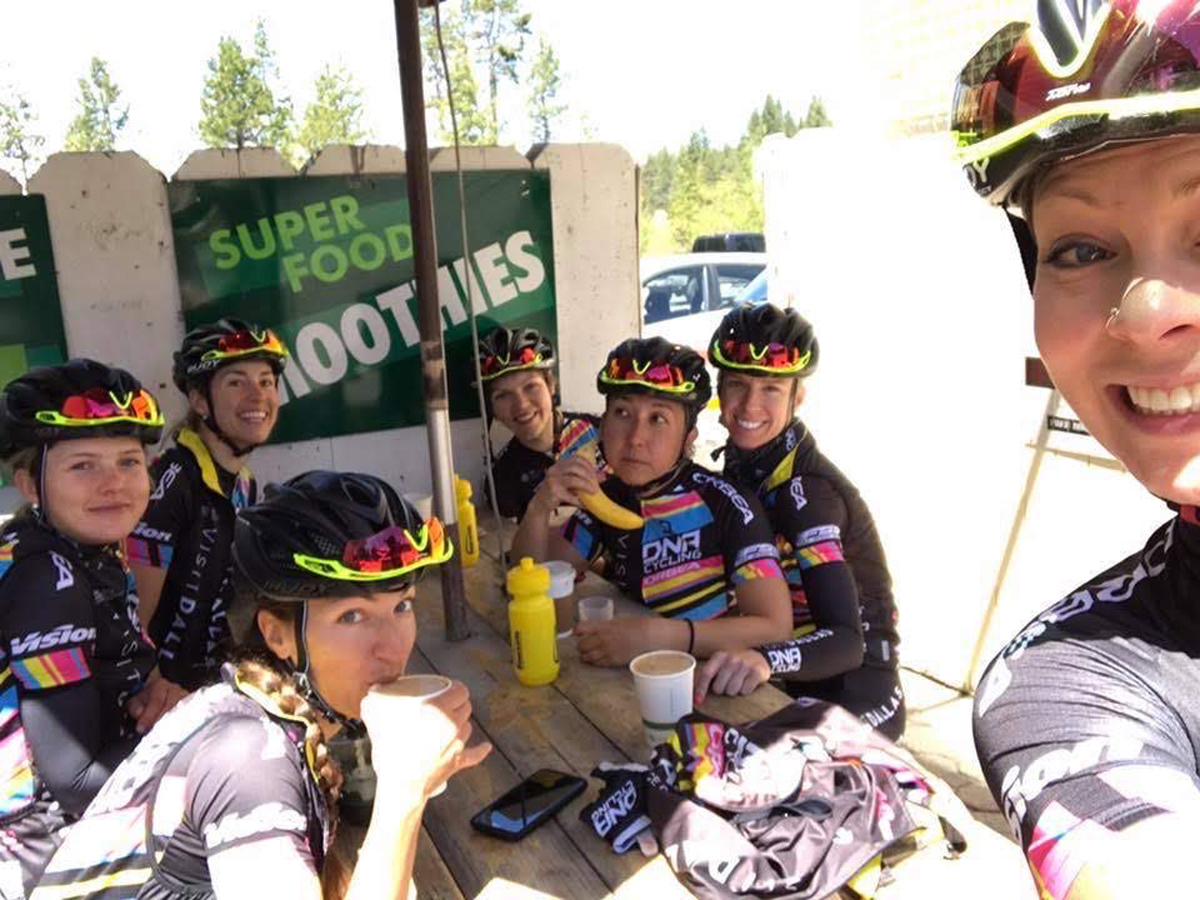By Breanne Nalder Harward, MS RDN — In my opinion, the best riding time of the year is the end of summer into fall. You’ve got a season of fitness in the bank and gorgeous weather to pedal in as well as the beauty of the changing leaves whipping by as you breeze through the trails or up and down the canyons. Have I set the scene? Good! Now let’s talk about your body’s energy needs.
As a refresher, Fueling 101 for endurance sports such as cycling tells us we need 30-60g of carbohydrate per hour. That’s 120-240 calories. But I’d venture to guess that you burn more than that per hour, correct? These recommendations are simply our base energy needs, and they vary from person to person depending on body size, gender, intensity of workouts and overall duration of each effort. Therefore, we have to take a lot of things into consideration when planning nutrition.

Let me first qualify that our total calorie intake for any given ride (on top of our daily energy needs) includes both pre- and post-workout fuel. Your breakfast and recovery nutrition do count. An example of this would be a midweek 2-hour ride. Let’s say you burn on average 550 kilojoules per hour. So, an 1100 calorie ride needs a breakfast of about 500 calories (mostly carbs of course), 90g carbohydrate during the ride from electrolyte mix and/or sport food (this is about an average 45g/hour, which is 180 calories), and recovery in a 3-4:1 carbohydrate-to-protein ratio of about 400 calories to total about 1100 calories.
Why reiterate the basics, like I have in so many other articles in some way or another? Well, partially to drill the nail in, but also to present a potential problem.
Let’s say you consistently under-fuel by a few hundred calories every ride. Not only will this limit your performance, but you’ll be digging yourself a physiological hole. There are numerous terms used to describe what happens when athletes overtrain and under-eat, including Low Energy Availability (LEA), Relative Energy Deficiency in Sport (RED-S), and Non-Functional Overreaching (NFOR), all of which indicate when there is an imbalance between training load relative to recovery.
If you feel you may fall into any of these categories, it’s crucial to take action to make nutritional changes. Besides performance suffering, continued LEA can impair systems throughout the body, including reproductive health, bone health, immunity, metabolism, heart health, and psychological health. Most athletes are not in a RED-S state intentionally but suffer from these symptoms as an accumulation of not feeling well, not performing to expectations despite training hard, and not being able to recover.
Please don’t get me wrong, I’m not talking about all this to scare anyone, but rather to shine a light on the importance of taking in sufficient energy and sport nutrition in order to perform to your potential and preserve your overall health.
Endurance athletes are often striving for the ideal power-to-weight ratio, so may restrict calories or diet. Please remember that the number on the scale is far less important than our ability to perform. We don’t want to negatively affect strength and speed for a desired number that may not be appropriate for body size or activity level.
To learn your exact needs and make a nutrition plan to meet your physical goals, ideally with a basal metabolic rate (BMR) measurement, my advice is always to contact a registered dietitian (RDN) for help.
The quality of nutrition is as important as the number of calories we take in when we’re talking about improving performance. It’s not just the number of kilojoules, but the type.
As a reminder, we want easily digestible carbohydrates with a hearty amount of water and electrolytes for all training and racing. Be sure to test your intake around training rides so you know it works for you in an event setting. It takes practice as well as trial and error to dial in the right food and sport nutrition for you and your palate, digestion, etc.
Stay tuned for my next article, where we’ll take a deep dive into specific foods, products, and supplements and their relative uses. Until then I wanted to share one great ideas for healthy calorie intake. Enjoy!
Pumpkin Spice Overnight Oats
INGREDIENTS:
- 1 cup oats
- 1/2 cup water
- 1/4 cup plain pumpkin puree
- 1/2 tsp vanilla extract
- 2 tsp chia seeds
- 1/8 tsp nutmeg
- 1/8 tsp ginger
- Optional toppings: 1/8 cup of blackberries, 1/8 cup of dried cranberries, 2 dates chopped, or sprinkle of unsweetened shredded coconut or cinnamon to taste.
INSTRUCTIONS:
- Mix together water, pumpkin puree, and vanilla extract in a medium bowl.
- Stir the packet of oatmeal, chia seeds, and spices into the bowl.
- 3Pour everything into an airtight container, place in fridge for 4 hours or overnight.

